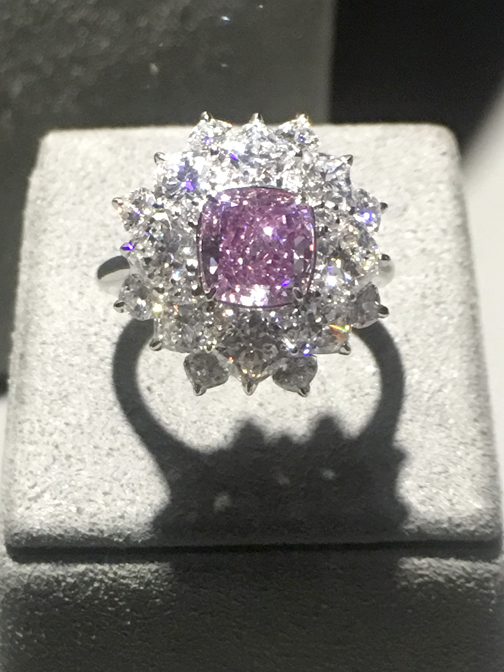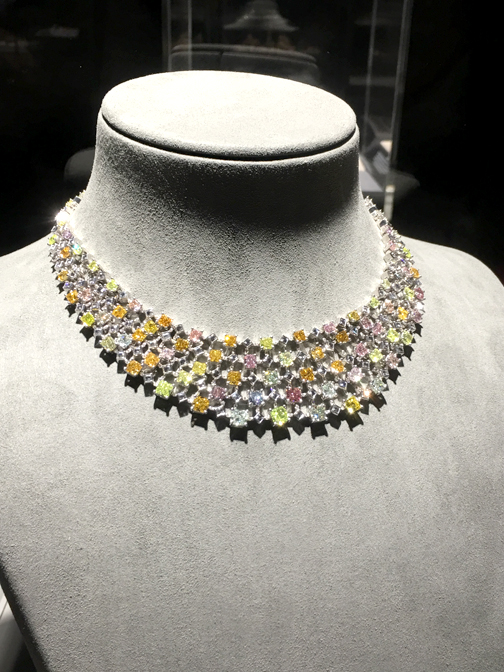
The Juliet Pink Diamond is among the rarest gems in the world.
By Charly SHELTON
All that glitters is not gold. Sometimes its rubies, sapphires, kunzite, iron pyrite or diamonds. The Natural History Museum of Los Angeles is hosting a new mini-exhibit on glittery, shiny, sparkly diamonds.
We all know diamonds – they are tiny, clear and super hard. According to De Beers Diamonds, they are the rarest gems on the planet and they represent love and commitment. While this is not founded in fact but rather a De Beers ad campaign from 1888, the diamond has become the standard stone for engagement and wedding rings, and range from $1,000 to $23,800 per carat depending on clarity.

Diamonds are actually not that rare. De Beers owns a stockpile of rough diamonds in South Africa and hordes them to keep the availability small and the supply scarce, inflating prices every year since 1888, despite the Great Depression and the Recession. Diamond sales today are a $7.7 trillion industry, with over a million diamonds in the world market being bought and sold.
But the new exhibit “Diamonds: Rare Brilliance” features four naturally colored diamonds that actually are so rare as to be priceless, in that there are not enough examples to compare in order to establish a price point.
The Juliet Pink Diamond, the centerpiece of the new exhibit, is a 30-carat, perfectly clear, bright pink diamond. The natural pink color occurs in less than 0.1% of all diamonds, and the clarity Type IIa makes this one of the ratest stones on the planet. Set in a necklace of other clear diamonds, this is one of the most beautiful and unique pieces of jewelry ever fashioned. With it is the Argyle Violet and Victorian Orchid diamonds, both naturally purple colored and fashioned into rings. Finally there is the Rainbow necklace, an interlocked setting of colored diamonds ranging from the extremely rare blue-grey, to green-yellow, purple-pink, brown-orange and orange-pink, some of which shine in luminescent color under black light.
The exhibit is small – only two display cases located in the Gem Vault of the standing collection of gems – but impressive. I don’t know if these two cases are worth a special trip to the museum like one of the other larger exhibits like “Pterosaurs: Flight in the Age of Dinosaurs.” These gems are very interesting and beautiful to look at, but going through the exhibition takes about four minutes. For anyone who may have out-of-town visitors looking for something to do, or anyone who isn’t familiar with the rest of the standing collection, this is a nice bonus. But for locals who have been coming to this museum for school trips, college research, special exhibitions or just for fun, it doesn’t offer much more that hasn’t been seen.
That being said, it is interesting and beautiful and a great way to entertain those holiday visitors.
For more information, visit NHM.org.

